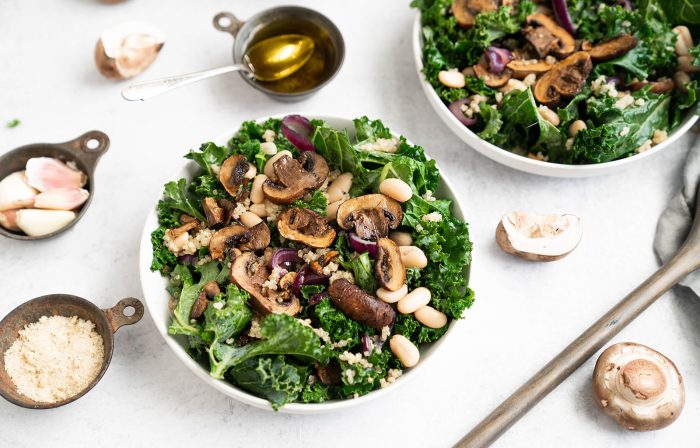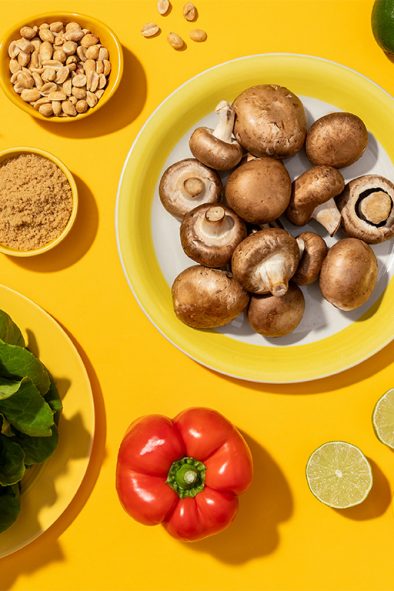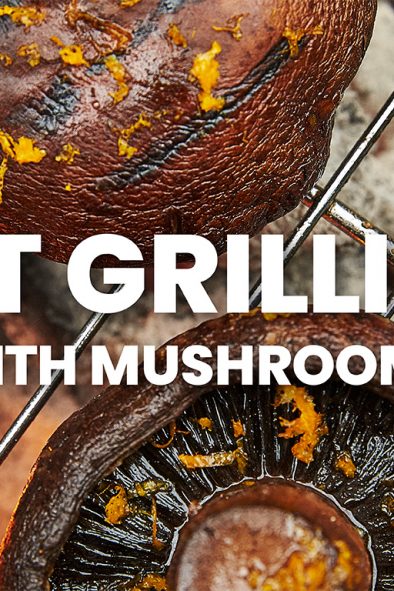Articles
Why I’m Eating Mushrooms For Earth Day

By: Wendy Reinhardt Kapsak, MS, RDN, President & CEO of Produce for Better Health
Earth Day is an important moment for me each year. I use the day as an opportunity to crystallize my thoughts on how the choices I make impact my community and the planet. It’s a moment to reflect and be more intentional about how I can be a better steward of the environment. It’s also an amazing opportunity to teach my kids how they can do good for the planet, and themselves through their food choices.
So what is this year’s Earth Day plan? Have A Plant® of course, which also includes eating more fresh mushrooms.
Mushrooms Are One Of The Most Sustainably Produced Foods
Eating fresh mushrooms is one of the most environmentally friendly decisions I can make for my family’s plate, as researchers[1] consider mushrooms “one of the most sustainably produced agriculture products in the nation.”
This is by no means saying a mushroom grower is a better steward or more caring for the environment than other farmers and food producers. Every farmer I have the pleasure to work with, and every food producer I know, is doing their utmost to make their production practices more sustainable each and every day. This approach is not just good for the planet, it’s good for their business.
Specially, or, the very nature in which mushrooms are grown carries a low environmental footprint. Check out these facts and figures1:
- Mushrooms need minimal resources to grow. Producing one pound of mushrooms requires only:
- 1.8 gallons of water (For reference, according to the Water Research Foundation, the average shower uses roughly 17 gallons of water and lasts about 8 minutes. So growing a pound of mushrooms uses a fraction of the water used for a typical morning shower.)
- 1.0 kilowatt of electricity (For comparison, The US Energy Information Administration says the average U.S. household uses 29 kilowatt hours per DAY!)
- Likewise, producing one pound of mushrooms generates only 0.7 lbs of CO2 equivalents (Whereas, according to the Environmental Protection Agency, the average US household produces 7.5 TONS of carbon equivalents per year.
- Mushrooms need minimal land space. A farmer can grow one million pounds of mushrooms each year on just one acre of land.
- Mushrooms are grown in composted agriculture materials, which after harvest, are often recycled into potting soil.
- Mushrooms can be grown indoors, year-round, so producers don’t have to navigate around weather patterns or the seasons.
- Mushrooms are one of the few plants you can effortlessly eat whole! When preparing, you use the whole mushroom – no need to toss any seeds, stems, peels, etc.
Add this all up, and it is clear why mushrooms are considered one of the most heralded plants around Earth Day.
Gentle On The Planet, Healthy On The Plate
There’s another major reason I’m eating mushrooms for Earth Day…and more often, quite frankly, and it threads directly into my professional life and mission.
Last year, Produce for Better Health Foundation (PBH) released its State Of The Plate research. Every five years, we commission The NPD Group to conduct an in-depth analysis of fruit and vegetable consumption. We found, sadly, that we as a nation are experiencing a chronic and persistent consumption crisis. The vast majority of Americans do not meet recommended fruit and vegetable intake with 80% under-consuming fruit and nearly 90% under-consuming vegetables.
Mushrooms can play an essential role in many of the recommendations PBH put forth to reverse the continued erosion of produce intake by adding more servings to their plate every day.
We noted, “We must make it easy for consumers at all stages of the fruit and vegetable consumption journey.” Mushrooms can be part of the solution, with their inherent umami bringing a bold, distinct flavor to everyday dishes during any dining occasion – from omelets in the morning, to sandwiches at lunch, to pasta for dinner. They add bold flavor, bountiful nutrition and good fun.
We also shared in the State Of The Plate report, “New fruit and vegetable habits are more likely to be attained when built upon current consumption behaviors and when paired with other foods.” Here again, mushrooms offer a unique solution, as they often are a ‘best friend’ to other foods. Consider this: can a burger help close the produce consumption gap? Partially, if you blend finely chopped mushrooms into the meat. Less sodium, less fat, less cholesterol, more produce. And boy does my family love a good burger!
Why not tap into experiences I know my family already enjoys and loves as an opportunity to get more produce on our plates? I challenge us this Earth Day to make one small change by adding more produce – consider mushrooms in particular – to your plates for better health and happiness, and also for the planet. Then, perhaps you’ll want to celebrate all month long with this ritual. By the end of the month, your family could be craving this new trend that has developed into a habit, and hopefully a go-to family favorite.
So this Earth Day, here’s a plan: Have A Plant®! And remember, fruits and veggies can be gentle on the planet, and healthy on the plate – mushrooms for the win this April 22nd and beyond!
[1] The Mushroom Sustainability Story: Water, Energy and Climate Environmental Metrics 2017 study, produced by leading sustainability analysis and research firm SureHarvest, is the result of a two-year initiative to document mushroom production environment metrics. Additionally, SureHarvest and UC Davis researchers collaborated on a life cycle assessment study of mushroom production in the United States: Robinson, B., Winans, K., Kendall, A. et al. Int J Life Cycle Assess (2019) 24: 456. https://doi.org/10.1007/s11367-018-1456-6.





